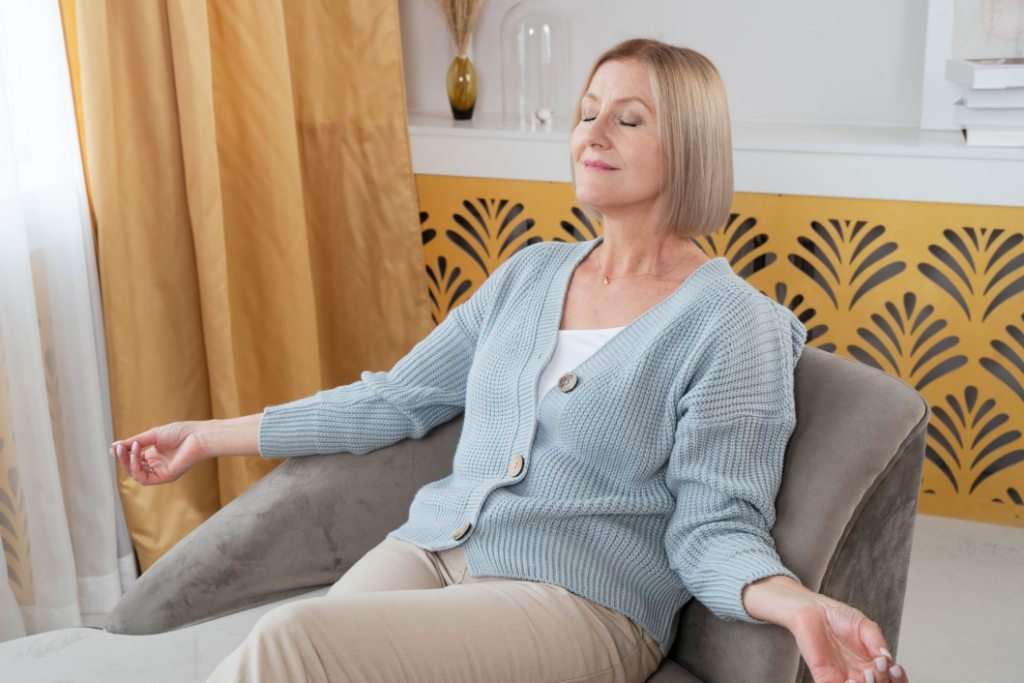Have you ever had those moments when your emotions boil over, leading you to say something you later regretted? Yes, I’ve been there too.
We all experience times when our emotions surge, prompting impulsive reactions that can leave a trail of damage in its wake. It’s as if our emotions have taken control, leaving our responses far from helpful, often resulting in conflict and regret.
Consider it like this: Use your thumb and index finger as a visual and imagine that your thumb represents emotion and your index finger represents your reaction. What are the odds of a calm, measured response if your emotion is pressed against your reaction (take a second to pinch your thumb and index finger together)? Not great, right?

However, if we create space between our emotions and reactions—move your finger and thumb an inch apart—we increase the chances of responding thoughtfully rather than impulsively. This space allows us to choose our words carefully, avoiding the harm that rash reactions can cause by pausing, taking a breath, and stepping back from the edge of intense emotion.

Learning to navigate our emotions effectively is a process. It’s not about suppressing them or exploding with outbursts; it’s about realizing that while we can’t always control our emotions, we can control how we express them. Emotions are valid. If something upsets us, then it makes sense that we are upset. The power of the pause lets us choose a response that builds connection instead of causing conflict.
Remember the power of the pause next time you feel a wave of emotion rising. It can be the difference between escalation and understanding or between division and connection. Take a moment to breathe, and then choose your words with intention. It’s within these pauses that we often discover our truest voices and build our deepest connections.
Here are some ways to learn to pause, breathe, connect more effectively, and turn moments of emotional turmoil into opportunities for deeper understanding and compassion.
Daily relaxation techniques are valuable for creating space between emotions and reactions. Here are a couple of effective techniques, along with explanations of why they help:
1. Deep Breathing
Technique: Sit or lie down in a comfortable position. Close your eyes and slowly inhale through your nose, allowing your chest and lower belly to rise as you fill your lungs. Hold your breath briefly, then exhale slowly through your mouth or nose. Repeat several times.
Why It Helps: Deep breathing helps slow the heart rate and lower blood pressure, creating a feeling of calm. Taking a deep, intentional breath can help you create space between your emotion and reaction, which can help you respond more thoughtfully instead of impulsively.
2. Progressive Muscle Relaxation
Technique: Start with the feet and progressively move up to the face. Tensing one muscle group for approximately five to ten seconds is the goal, then relaxing completely. Notice the contrast between tension and relaxation.
Why It Helps: This relaxation technique helps reduce physical tension, often accompanying emotional stress. When your body is less tense, it signals to the brain that there is no immediate danger, helping to calm the mind. This makes it easier to think clearly and respond calmly rather than reacting out of stress or anxiety.
Additional Benefits of Regular Relaxation Practice:
- Improved Focus and Concentration: Regular relaxation practice can help improve your ability to concentrate and maintain focus, essential in managing emotional responses and engaging in thoughtful communication.
- Reduced Stress and Anxiety: Regularly activating the body’s relaxation response diminishes everyday stress levels and decreases the likelihood of responding to new stressors in an overly emotional way.
- Better Sleep: Enhanced relaxation skills can improve sleep patterns, improve emotional regulation, and reduce irritability.
Incorporating these techniques into daily life provides immediate relief from stress. It builds a foundation for more resilient emotional health, enabling a more measured response to situations that might have previously prompted a reactive burst.




